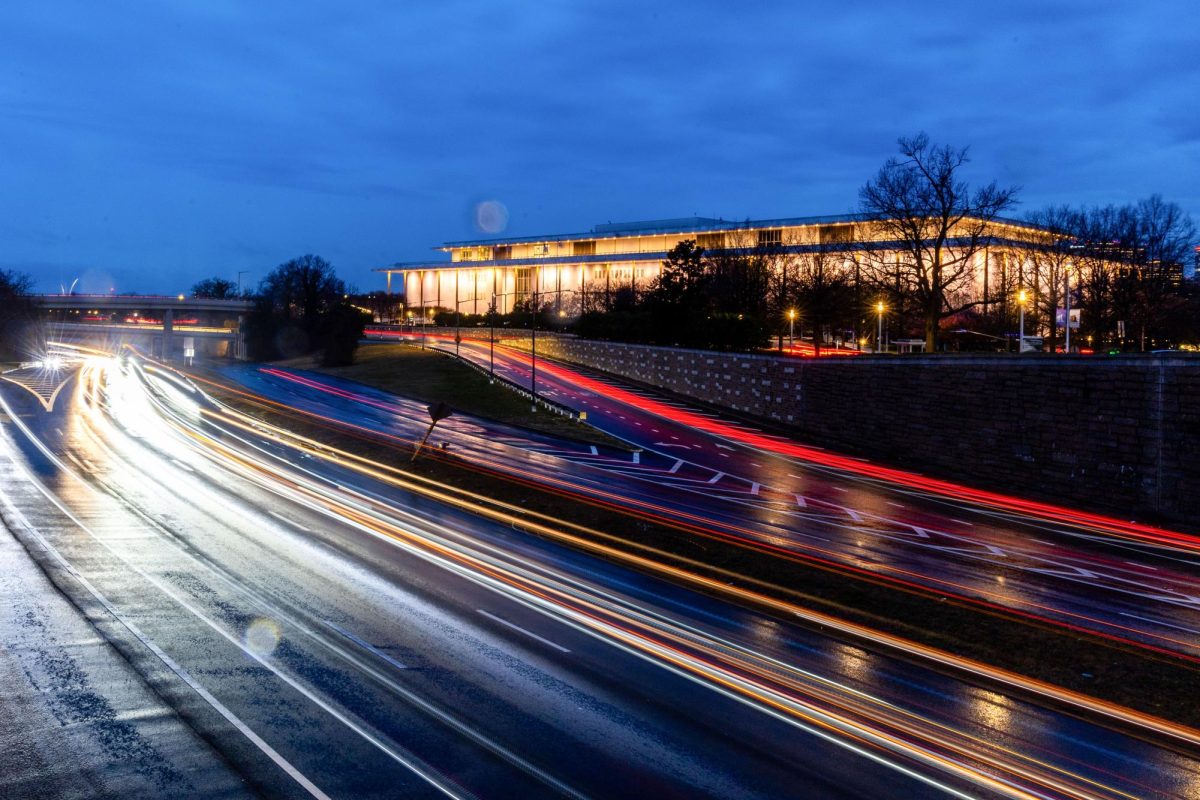A panel of urban planning experts released a report last month with recommendations to improve the physical divide created by a stretch of highway near the Kennedy Center.
D.C. officials commissioned the think tank Urban Land Institute to lead the report, which consisted of a two-day panel in September with more than 30 stakeholders to form recommendations. The report calls for the formation of an authority to oversee a proposed Kennedy Center Cultural District, helping facilitate land use changes.
The board of the potential Kennedy Center Cultural District Development Authority would include the deputy mayor for planning and economic development, the Kennedy Center, the governors of Virginia and Maryland, and other nearby institutions to create transportation, governance and funding plans, the report states. The report also recommends the reconfiguration of Interstate 66, which stakeholders contend divides Kennedy Center pedestrians and cyclists from the rest of Foggy Bottom.
Marc Gazda, a project manager at ULI Washington and the report’s author, said a key goal of the panel was outlining a framework for local leaders to galvanize support for their proposals.
“The very next step is forming this development authority,” Gazda said.
The report, also supported by the National Capital Planning Commission, found that a strong desire for pedestrian and cyclist connectivity in the region is not met by existing infrastructure. Gazda said the stretch of I-66 near the Kennedy Center effectively isolates the area from institutions on E Street like the State Department, along with the National Mall and the rest of Foggy Bottom, making it difficult for pedestrians and cyclists to travel to nearby landmarks.
“Some of the side effects from that jumble of infrastructure that we observed were that it’s incredibly unintuitive to get to this study area from the Foggy Bottom Metro station,” Gazda said.
The report states that the route from the Kennedy Center to the Metro station “is not intuitive or immediately visible,” although the distance between the two locations is relatively short.
The report found stakeholders view the area near I-66 as “interrupted” by the highway and stated the need to refocus the area on pedestrian use because it is now primarily catered to vehicle users. First proposed in 1958, the construction of I-66 displaced more than 270 families and left some historic homes, built in the 1870s, tucked beneath an exit ramp.
The report recommends creating a grand boulevard along E Street connecting the Capitol to the REACH area of the Kennedy Center. The report also evaluates the region bound by Constitution Avenue, the Potomac River and M and 23rd streets.
Stakeholders are divided on the placement of the Virginia Avenue protected bike lane, with some saying its two-way bicycle traffic should be replicated in other areas and others saying its “confusing and unsafe nature” limits overall mobility in the area, according to the report. D.C. Department of Transportation installed three sets of bike lanes in the neighborhood between 2020 and 2021, most recently along Virginia Avenue from Rock Creek Trail to Constitution Avenue in 2021.
The report also recommends adding additional signage to help pedestrians navigate the area, and future market analyses of the study area to evaluate visitor traffic and the capacity for retail in the area.
Thomas Luebke, the secretary of the U.S. Commission on Fine Arts and one of the stakeholders identified by the panel, said the highway network does not function well for those living near it and “cuts off” the Kennedy Center from the rest of the city.
“It would be nice to reconnect it,” Luebke said. “There’s a whole cluster of issues that all point to a really great opportunity in this part of the city to improve things we probably wouldn’t do today if we were thinking about it that way.”
Luebke said Congress ultimately decides the placement of commemorative works like monuments but there is high demand for potential site areas. The report states that a new governance structure for the Kennedy Center region could make it more amenable as a site for new monuments and museums.
“It’s a perennial idea of trying to fix this,” Luebke said.





